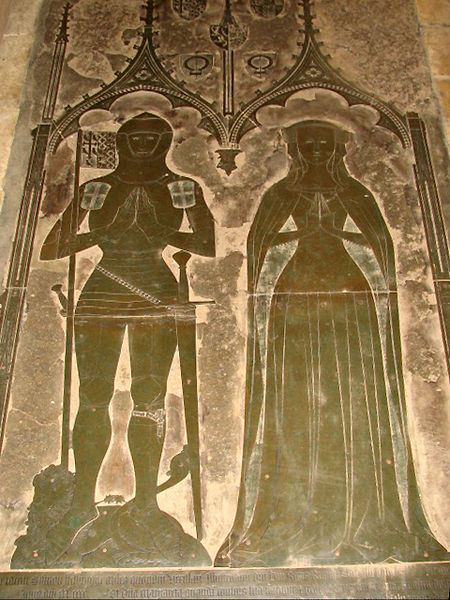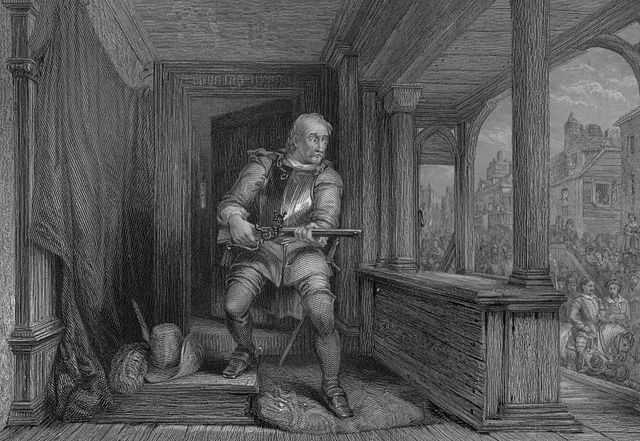A monumental brass is a type of engraved sepulchral memorial once found through Western Europe, which in the 13th century began to partially take the place of three-dimensional monuments and effigies carved in stone or wood. Made of hard latten or sheet brass, let into the pavement, and thus forming no obstruction in the space required for the services of the church, they speedily came into general use, and continued to be a favourite style of sepulchral memorial for three centuries.
Brass group of 1378 commemorating Sir John Foxley and his two wives in St Michael's Church, Bray, Berkshire
Monumental brass of Simon de Felbrigge and wife Margaret of Teschen, St Margaret's Church, Felbrigg, Norfolk
Memorial brass of Sir John D'Abernon II (the Elder) in Stoke d'Abernon, Surrey
Memorial brass of the Swift family, 16th century, All Saints' Church, Rotherham, South Yorkshire. They were later owners of Broom Hall, Sheffield
James Hamilton (assassin)
James Hamilton of Bothwellhaugh and Woodhouselee was a Scottish supporter of Mary, Queen of Scots, who assassinated James Stewart, 1st Earl of Moray, Regent of Scotland, in January 1570. He shot Moray from the steps of his uncle Archbishop John Hamilton's house in Linlithgow.
James Hamilton preparing to assassinate the Regent Moray (1835 illustration)
Detail from a stained glass window depicting the assassination
Regent Moray plaque close to the assassination spot
Crosbie church gates.








